
Camp Doniphan was a military base adjacent to Fort Sill, just outside Lawton, in Comanche County, Oklahoma, that was activated for use in World War I for artillery training. [1] The post was closed in 1918 and incorporated into Fort Sill. [2]

Camp Doniphan was a military base adjacent to Fort Sill, just outside Lawton, in Comanche County, Oklahoma, that was activated for use in World War I for artillery training. [1] The post was closed in 1918 and incorporated into Fort Sill. [2]
The camp was named for Alexander William Doniphan, a hero of the Mexican–American War from the Missouri Volunteers of Northwestern Missouri. It was from this camp that thousands of soldiers, from Oklahoma, Kansas and Missouri, were given basic training prior to being sent to Camp Mills, Mineola, Long Island, New York; Philadelphia, Pennsylvania; or Camp Merritt, Dumont, New Jersey, for embarkation to France. The camp contained 1,267 buildings, the majority of which were tents, over a 2,000-acre (8.1 km2) area. [3]
The camp was home of the 35th Infantry Division, made up of the National Guard of Kansas and Missouri. [4] [5] [6] [7] It became part of the United States Army Field Artillery School, and included the 128th Field Artillery Regiment and 129th Field Artillery Regiment of Missouri, 130th Field Artillery Regiment of Kansas, and the 158th Field Artillery Regiment of Oklahoma. [8] [9] [10] [11] Harry S. Truman was stationed at Camp Doniphan from September 1917 until March 1918, and he was assigned to run the regimental canteen. [9] [12] [13] [14] It was here that he made Edward Jacobson his business partner. [15]

The 35th Infantry Division, formerly known as the 35th Division, is an infantry formation of the United States Army National Guard headquartered at Fort Leavenworth, Kansas.

The 89th Infantry Division, originally known as the "89th Division," was an infantry formation of the United States Army that was active during World War I, World War II, and the Cold War.
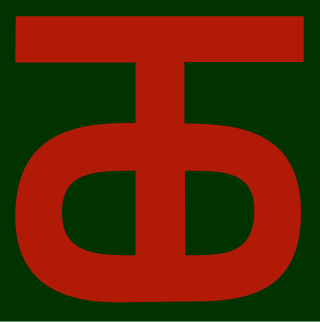
The 90th Infantry Division was a unit of the United States Army that served in World War I and World War II. Its lineage is carried on by the 90th Sustainment Brigade.

The 33rd Infantry Division was a formation of the U.S. Army National Guard between 1917 and 1968. Originally formed for service during World War I, the division fought along the Western Front during the Battle of Amiens, the Battle of Hamel, the Meuse-Argonne Offensive, at the Second Battle of the Somme, and at the Battle of Saint-Mihiel. It was re-formed during the inter-war period, and then later activated for service during World War II, seeing action against the Imperial Japanese Army in the Pacific. In the post war era, the division was reconstituted as an all-Illinois National Guard division. In the late 1960s, the division was reduced to a brigade-sized formation, and its lineage is currently perpetuated by the 33rd Infantry Brigade Combat Team.
The United States Army Regimental System (USARS) is an organizational and classification system used by the United States Army. It was established in 1981 to replace the Combat Arms Regimental System (CARS) to provide each soldier with continuous identification with a single regiment, and to increase a soldier's probability of serving recurring assignments with their regiment. The USARS was intended to enhance combat effectiveness by providing the opportunity for a regimental affiliation, thus obtaining some of the benefits of the traditional regimental system.
The Battle of Old Fort Wayne, also known as Maysville, Beattie's Prairie, or Beaty's Prairie, was an American Civil War battle on October 22, 1862, in Delaware County in what is now eastern Oklahoma.

John Francis Uncles was a lieutenant general in the United States Army. He attained prominence as commander of the United States VII Corps.
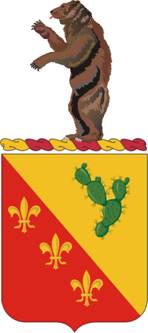
The 129th Field Artillery Regiment is a regiment of the Field Artillery Branch of the United States Army, part of the Missouri Army National Guard. The 1st Battalion is the only active unit of the regiment, with the battalion Headquarters and Headquarters Battery in Maryville, Battery A in Albany, Battery B in Chillicothe, and Battery D in Independence. The battalion is a subordinate unit of the 130th Field Artillery Brigade, headquartered in Manhattan, Kansas.
The 9th Field Artillery Regiment is a field artillery regiment of the United States Army first formed in 1916. The regiment served in Hawaii during World War I, 3rd, 4th, 7th, and 9th Divisions between the world wars, and with 3rd Infantry Division during World War II and Korea. Since 1957, the regiment has been a parent regiment under the Combat Arms Regimental System and the U.S. Army Regimental System, with regimental elements serving with the 3rd, 4th, 10th, 25th, 79th, 83rd, and 96th Infantry Divisions and various field artillery brigades and groups. The regiment's single active component, the 1st Battalion, 9th Field Artillery Regiment, is assigned to the 2nd Brigade Combat Team, 3rd Infantry Division and stationed at Fort Stewart, Georgia.
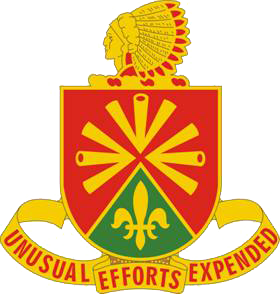
The 158th Field Artillery Regiment is a Field Artillery regiment of the Army National Guard.
The 203rd Engineer Battalion is a combat engineer battalion of the Missouri Army National Guard.

The 1st Battalion, 161st Field Artillery Regiment is a field artillery battalion of the Kansas Army National Guard. Like many National Guard field artillery battalions, it is the sole active battalion in its regiment. The battalion is currently headquartered in Hutchinson, and consists of three firing batteries: Alpha, Bravo (Abilene), Charlie (Newton), and a Headquarters Battery (Hutchinson). The battalion has a direct support relationship with the 1161st Forward Support Company. The battalion is subordinated to the 130th Field Artillery Brigade (Manhattan).

The 45th Fires Brigade is a modular field artillery brigade of the United States Army headquartered in Mustang, Oklahoma. It is a part of the Oklahoma Army National Guard.
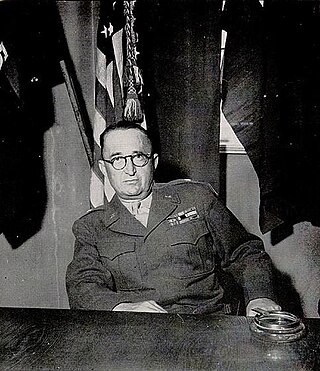
Theodore Leslie Futch was a United States Army officer with the rank of brigadier general. He spent his whole army career in the Field Artillery Branch.

The 110th Maneuver Enhancement Brigade is a maneuver enhancement brigade of the Missouri Army National Guard. The brigade has been assigned to the 35th Infantry Division since mid-2023, and will be reorganized as the division's "protection brigade" by 2026 as the U.S. Army modifies its divisional structures.
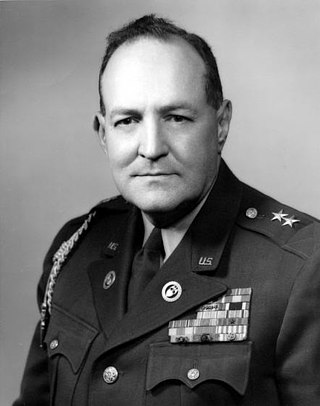
Major General Harry Hawkins Vaughan was a senior officer in the United States Army Reserve and the aide to Harry S. Truman during his time as vice president (1945) and president. He was one of Truman's closest advisors.
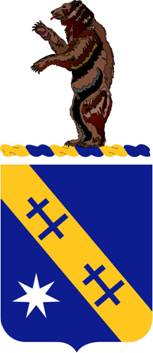
The 140th Infantry Regiment was an infantry formation of the Missouri National Guard.
The 128th Field Artillery Regiment was a field artillery regiment of the United States Army, part of the Missouri Army National Guard that traced its lineage to 1917. The 1st Battalion, the only active unit of the regiment, was inactivated in 2008.